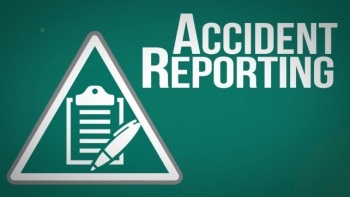Complete Powerpoint slide presentation for forklift instructors. Ready made training course
RIDDOR. Reporting of Injuries, Diseases and dangerous Occurrences Regulations 2013
 RIDDOR puts duties on employers, the self-employed and people in control of work premises (the Responsible Person) to report certain serious workplace accidents, occupational diseases and specified dangerous occurrences (near misses).
RIDDOR puts duties on employers, the self-employed and people in control of work premises (the Responsible Person) to report certain serious workplace accidents, occupational diseases and specified dangerous occurrences (near misses).
Who should report?
- An employer or in control of premises
- Self employed
- A member of the public, employee, injured person or their representative
- A gas supplier
- A gas engineer
- Working offshore
What should be reported?
The death of any person.
All deaths to workers and non-workers, with the exception of suicides, must be reported if they arise from a work-related accident, including an act of physical violence to a worker.
Specified injuries to workers. The list of ‘specified injuries’ in RIDDOR 2013 replaces the previous list of ‘major injuries’ in RIDDOR 1995. Specified injuries are (regulation 4):
- fractures, other than to fingers, thumbs and toes
- amputations
- any injury likely to lead to permanent loss of sight or reduction in sight
- any crush injury to the head or torso causing damage to the brain or internal organs
- serious burns (including scalding) which:
- covers more than 10% of the body
- causes significant damage to the eyes, respiratory system or other vital organs
- any scalping requiring hospital treatment
- any loss of consciousness caused by head injury or asphyxia
- any other injury arising from working in an enclosed space which:
- leads to hypothermia or heat-induced illness
- requires resuscitation or admittance to hospital for more than 24 hours
Over-seven-day incapacitation of a worker
Accidents must be reported where they result in an employee or self-employed person being away from work, or unable to perform their normal work duties, for more than seven consecutive days as the result of their injury. This seven day period does not include the day of the accident, but does include weekends and rest days. The report must be made within 15 days of the accident.
Over-three-day incapacitation
Accidents must be recorded, but not reported where they result in a worker being incapacitated for more than three consecutive days. If you are an employer, who must keep an accident book under the Social Security (Claims and Payments) Regulations 1979, that record will be enough.
Non fatal accidents to non-workers (eg members of the public)
Accidents to members of the public or others who are not at work must be reported if they result in an injury and the person is taken directly from the scene of the accident to hospital for treatment to that injury. Examinations and diagnostic tests do not constitute ‘treatment’ in such circumstances.
There is no need to report incidents where people are taken to hospital purely as a precaution when no injury is apparent.
More information can be found on the HSE website or you can download a free copy of RIDDOR here